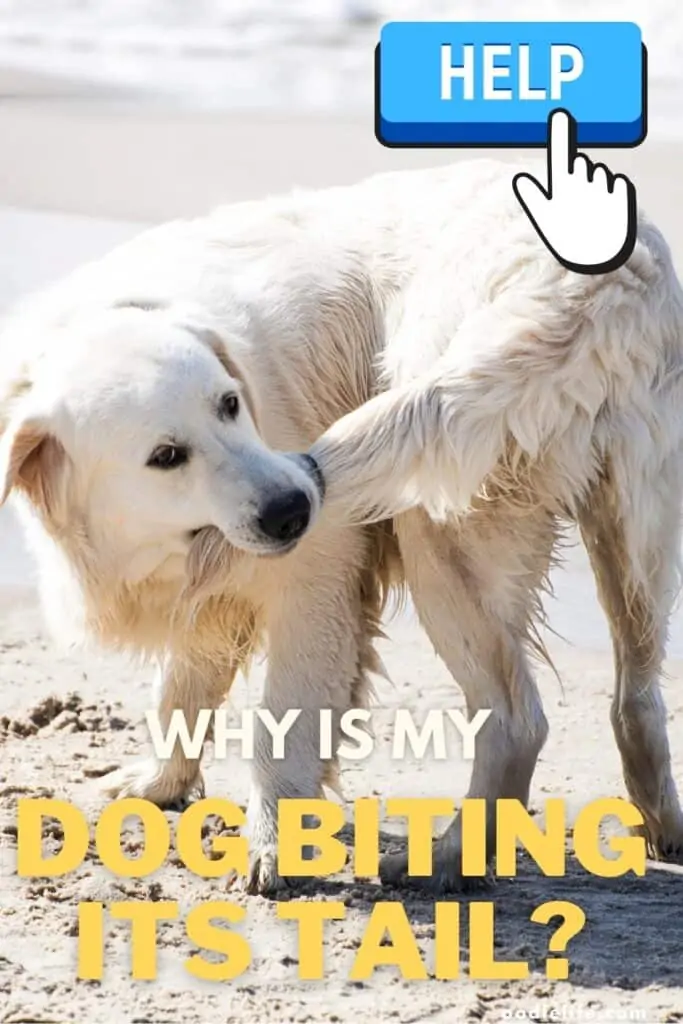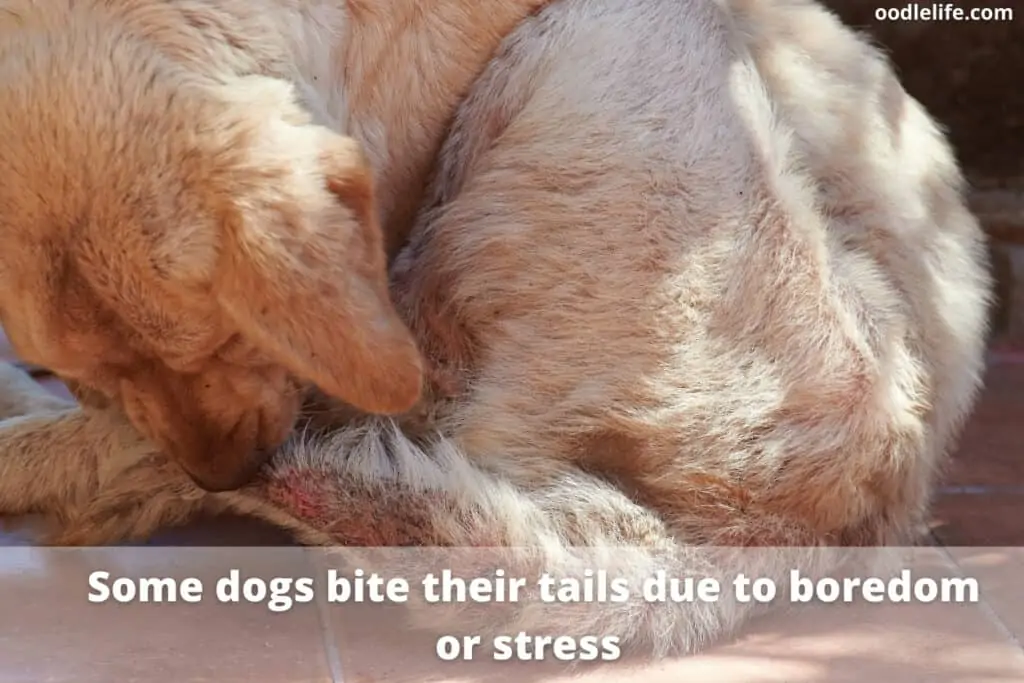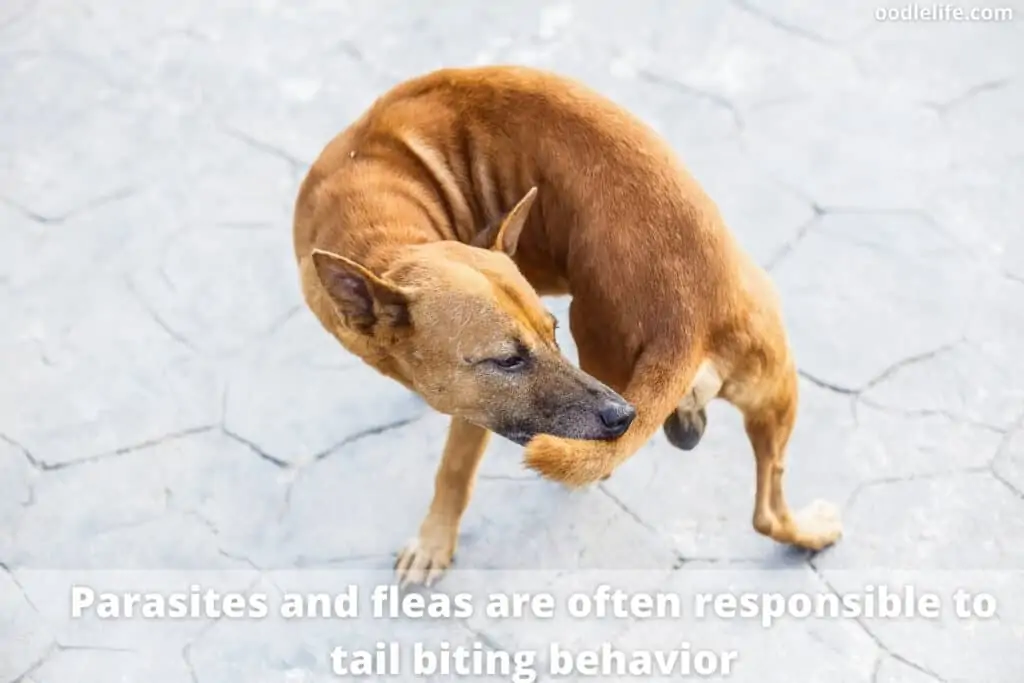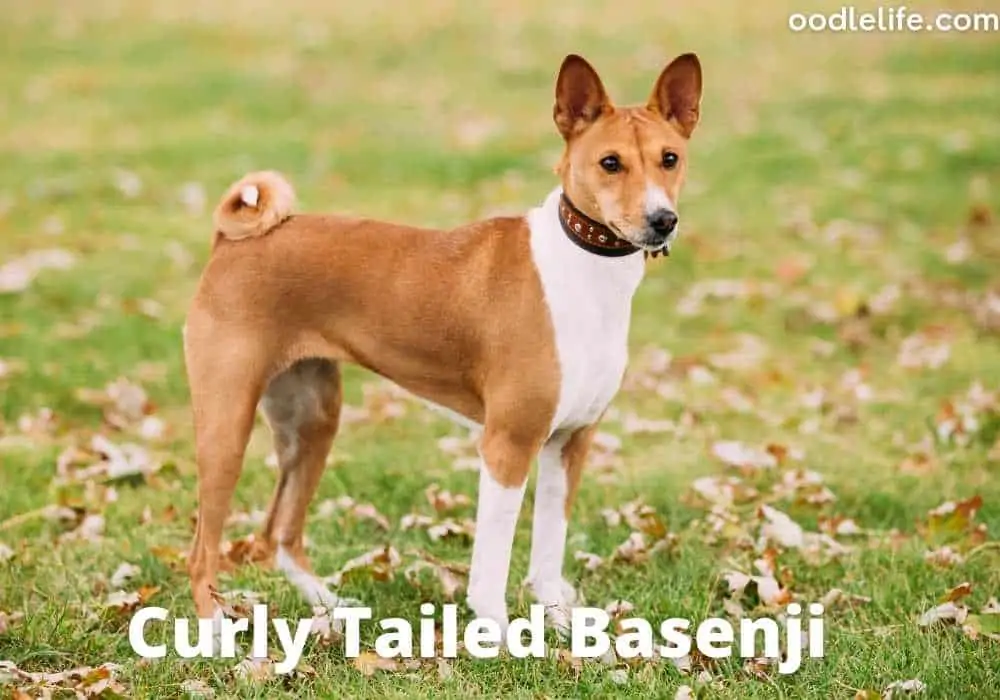Why Is My Dog Biting His Tail?
Dogs biting their tails is a common problem, but that doesn’t mean it’s not a cause for concern. If your dog is biting his tail, especially on a frequent or even constant basis, there must be an underlying problem causing the behavior. Tail biting can also lead to injury and infection.
There are several potential reasons for your dog biting his tail. These include parasites, an impacted anal gland, infections or hot spots, allergies and skin irritation, injury, and even boredom or stress.

Let’s learn more about these causes to help you figure out which of them apply to your canine companion.
Why Is Tail Biting a Problem?
Put simply, it’s a problem because it could lead to substantial injury or even infection for your dog. When tail chasing and biting is compulsive and frequent, it is also distressing for your dog. Even more distressing is that a physical condition may be the root cause of the behavior. This may require veterinary treatment.
Possible Reasons Your Dog Is Biting His Tail
There are several potential reasons your dog is biting his tail. Let’s take a look at them below.

Anal Gland Problems
An impacted anal gland will lead to a dog chasing and biting his tail. An impacted anal gland means that the anal glands have become too full of fluid. When anal glands are not emptying as they should, they will get impacted.
A dog with an impacted anal gland must get veterinary attention. This is a serious problem and must be properly treated. It’s painful and can quickly end up in infection, which is dangerous. Some of the common symptoms of anal gland impaction in dogs include:
- Fluid from the anal glands has changed color
- Signs your dog is being irritated or distressed by its rear-end
- Dog is dragging its rump across the floor or carpet
- Offensive smell
Infections and Hot Spots
An infection or hot spot on the rear area of your dog or its tail may lead to him chasing or biting his tail. A hot spot is known more formally as acute moist dermatitis. If the hot spot has just started developing, it may look a little like a mosquito bite. After that, it will get bigger, spreading over a larger area. Eventually, it will cause your dog much pain and turn bright red and feel hot to the touch.
If your dog’s tail or rear area has been injured, this may have led to an infection. The irritation caused by such an infection may well be the reason your dog is always biting its tail. If you think your dog has a hot spot or infection, bring him to the vet right away. Infections and hot spots can be dangerous for your pet.
Parasites
A dog with fleas is likely to end up chasing or biting his tail. That is because flea bites are intensely itchy and will distress your pet. There are several approaches to getting rid of a flea infestation on your pet.
In many cases, you will have to use more than one method. If your dog has a flea allergy, these insects will cause even more than typical irritation. That also applies to other kinds of pest allergies, such as allergies to ticks and mites.
Fleas
Let’s go over some steps for getting rid of the fleas that are tormenting your canine companion.

Shampoo Your Dog
Wash your dog in the bath. You should use a shampoo formulated especially for dogs and keep the water lukewarm. Test the water on your own skin first to ensure it’s not too hot. There are flea shampoos on the market that you can ask your vet about. Some of the options available on the market are too harsh, so get a recommendation from the veterinarian.
Try a Flea Comb
Invest in a fine-toothed flea comb and use it on your dog. You’ll make your flea comb even more effective if you put it in some dish soap mixed with water before you use it to comb your dog’s coat.
Flea combs work by picking up and trapping the fleas in your dog’s coat. This tool should even eliminate some or all of the poop the fleas have deposited. This usually resembles pepper flakes. Even more importantly, it will get rid of flea eggs. Use the flea comb on a regular basis in case you missed some fleas, flea eggs, or flea poop the previous time.
When you see a flea or flea poop on the comb, immediately immerse it into hot water with soap. That will ensure the flea cannot stay alive to hop back on your pet.
Ask the Vet
Bring your dog to the veterinarian if your pet’s flea problem is severe or your efforts haven’t been sufficient to get rid of the problem. Vets have techniques and products that they can use to deal with your dog’s flea infestation.
Tapeworm
Tapeworm is another parasite that can afflict your dog and may lead to your dog chasing or biting his tail. This is a common parasite in dogs, but it’s definitely a problem, and you need to get your pet treated by a veterinarian.
When your dog has tapeworms, it has these worms in its intestines, where they latch on. They can catch irritation in the anus area.

Boredom or Stress
Dogs may develop compulsive and obsessive behaviors in response to stress or boredom. While some dogs may get destructive when they’re bored or anxious, others may engage in self-destructive behaviors.
If you think this is the underlying problem behind your pet’s tail biting, try to figure out the reason your dog is getting so bored or anxious. Ask for help from your veterinarian if necessary.
Final Thoughts
Don’t ignore the problem if your dog is biting his tail. Tail biting is a serious problem as it can lead to injury, and it usually shows there is an underlying condition that needs to be addressed. There are several potential reasons for tail biting, and we have outlined them above.